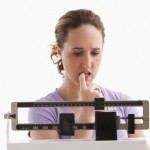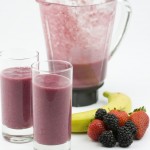Should Your Scale Weight Define You?
 What is in a number? As a trainer, the number one goal I hear – by far, is a desire to lose weight. More specifically to attain a particular number on that oh so dreadful scale. Here’s my problem with this weight watching method– on its own, that scale number is deceptive. The number, that millions of people fixate on, does not take into account a person’s height, sex, age, bone density, muscle mass, percent body fat, genetics, or fitness level. Nor does it indicate what kind of weight a person is losing (fat weight, lean weight, or both?). It does make a huge difference not only for our outward appearance but more importantly, to our health and risk of disease. So why are so many so obsessed with that one number? Can you tell this really gets my goat?
What is in a number? As a trainer, the number one goal I hear – by far, is a desire to lose weight. More specifically to attain a particular number on that oh so dreadful scale. Here’s my problem with this weight watching method– on its own, that scale number is deceptive. The number, that millions of people fixate on, does not take into account a person’s height, sex, age, bone density, muscle mass, percent body fat, genetics, or fitness level. Nor does it indicate what kind of weight a person is losing (fat weight, lean weight, or both?). It does make a huge difference not only for our outward appearance but more importantly, to our health and risk of disease. So why are so many so obsessed with that one number? Can you tell this really gets my goat?
Now don’t misunderstand me, absolutely, scales have their place in healthcare. Particularly with severely overweight/obese people that must lose weight and need to be on a strict regimen which includes daily weight monitoring. However, if you do not fall into this category, I personally would throw your scale out the window and focus on other methods. If you need to take baby steps then at the very least consider limiting the “weigh –ins” to once a week or twice a month. Try to omit as many variables as possible by weighing on the same scale; the same time of day; in the same clothing (or not) to get as valid a measurement as you can. Please remember that fluctuations of up to 5 pounds in a day are normal, so don’t panic if this is happening. Here are better and more indicative methods of measuring body composition (lean tissue to fat tissue) in increasing order of validity:
BMI – this takes into account your height and weight and is the method doctor’s use to determine if a person is underweight, normal, overweight or obese.
Waist to Hip Ratio – this simple calculation compares the circumference measures of your hip and waist. It is helpful for predicting a person’s risk for metabolic diseases.
Circumference measures (inches) – there are a number of different protocols that measure the circumference at different sites on one side of the body (waist, calf, triceps etc). The layman’s equivalent to this method (and my preference for my clients to use) is determining how your clothes are fitting or what notch your belt is on. Deep down, you truly know that it’s not the dryer’s fault those pants are snug…
While the above methods can be done on your own, you may need a professional to determine which protocol to use. The methods listed below will require a trained professional such as a personal trainer, nurse or a doctor to do the measurements correctly.
Percent Body Fat – as above, there are many protocols to choose from but all employ the use of skinfold calipers to measure skin fold thickness at various sites and calculate body fat percentage.
Combinations of the above – there are a several calculations that utilize the results of two or more of these methods and some that also incorporate age and sex to ascertain a more accurate assessment of one’s body composition.
Hydrostatic Weighing (underwater) –this is the gold standard for measuring body composition. At the risk of exposing my inner geek, in a nutshell, this method involves weighing a person underwater and takes into account water displacement principles by the different densities of lean tissue (muscle and bone) versus fat tissue. However, unless you are a professional athlete or specifically work in the lab that does this, chances are you probably will not have the opportunity to try this method.
And finally, to emphasize my previous point which is often overlooked – you can decrease your scale weight number but NOT the amount of fat in your body – and don’t even get me started on this topic because that is for another day.



















